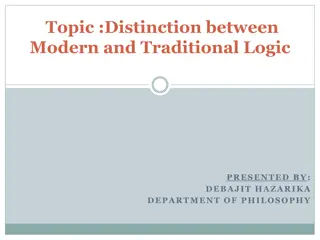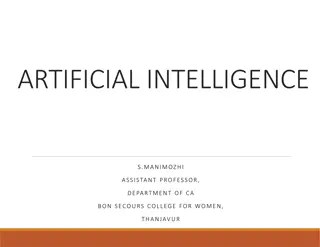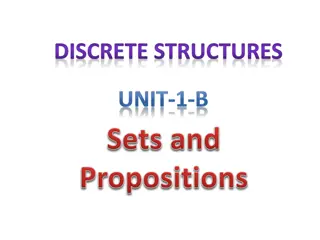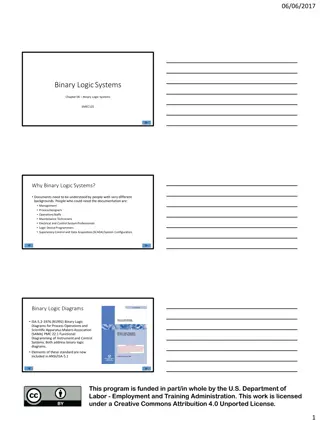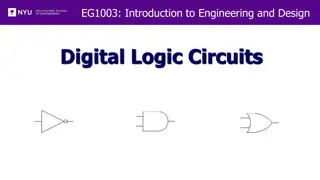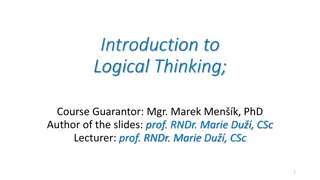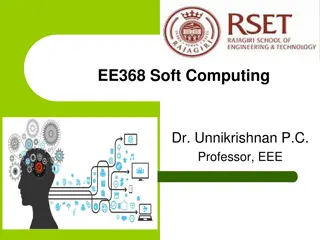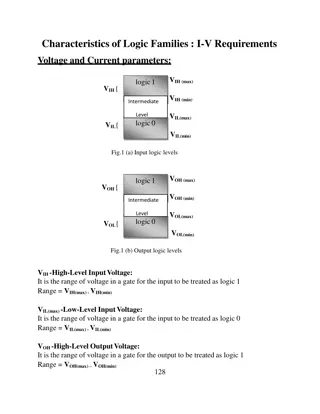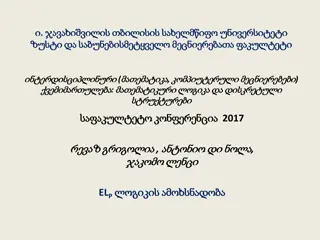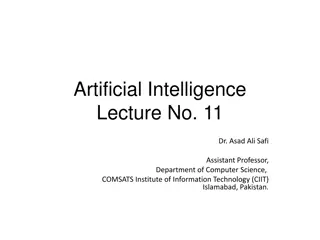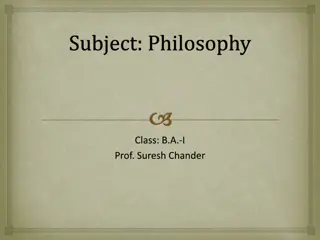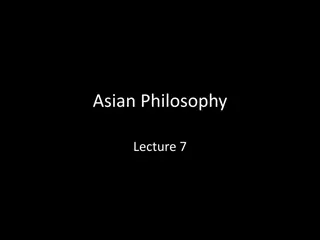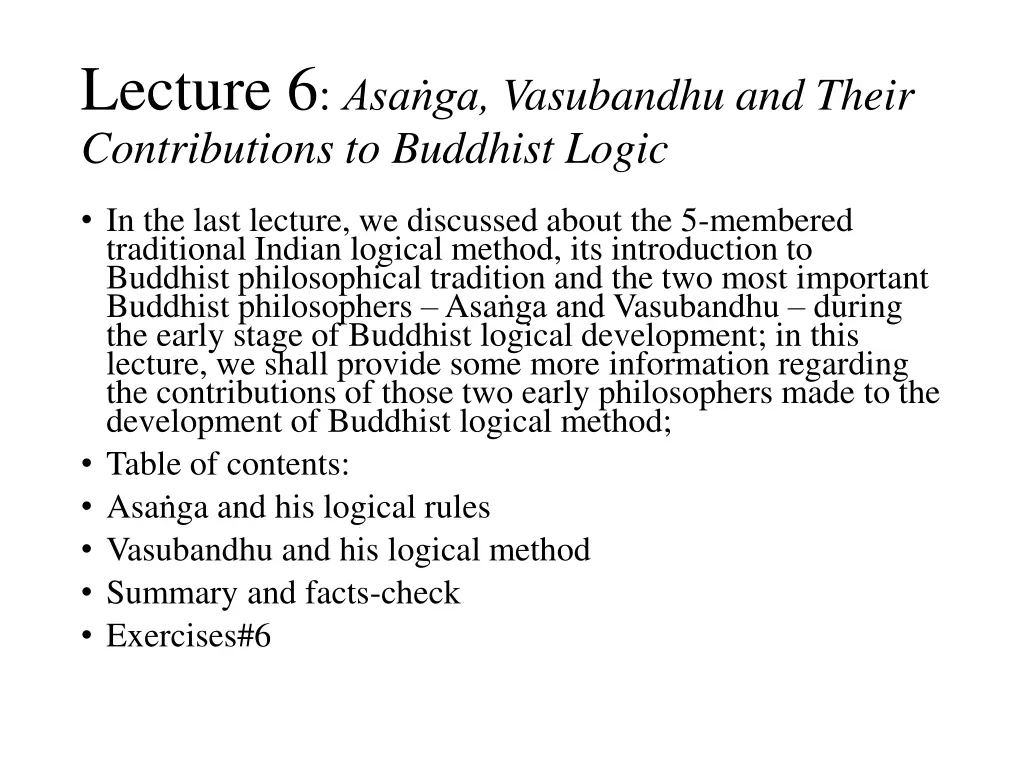
Asa.ga and Vasubandhu: Buddhist Logic Contributions
Explore the significant contributions of Asa.ga and Vasubandhu to Buddhist logic development, focusing on their logical rules and methods. Learn about key concepts such as direct perception and inference, as well as the foundation of Buddhist debate outlined by these early philosophers.
Uploaded on | 0 Views
Download Presentation

Please find below an Image/Link to download the presentation.
The content on the website is provided AS IS for your information and personal use only. It may not be sold, licensed, or shared on other websites without obtaining consent from the author. If you encounter any issues during the download, it is possible that the publisher has removed the file from their server.
You are allowed to download the files provided on this website for personal or commercial use, subject to the condition that they are used lawfully. All files are the property of their respective owners.
The content on the website is provided AS IS for your information and personal use only. It may not be sold, licensed, or shared on other websites without obtaining consent from the author.
E N D
Presentation Transcript
Lecture 6: Asaga, Vasubandhu and Their Contributions to Buddhist Logic In the last lecture, we discussed about the 5-membered traditional Indian logical method, its introduction to Buddhist philosophical tradition and the two most important Buddhist philosophers Asa ga and Vasubandhu during the early stage of Buddhist logical development; in this lecture, we shall provide some more information regarding the contributions of those two early philosophers made to the development of Buddhist logical method; Table of contents: Asa ga and his logical rules Vasubandhu and his logical method Summary and facts-check Exercises#6
Asagas logical tracts: the tracts consist of 7 major parts, from the debate itself (v da) to utility in the debate (vade bahukar dharm ); please see below the outline of the text;
Foundation of the debate: out of the 7 sections, the third one, or the foundation of the debate (3rdsection) is one of the most important and interesting sections; in that section, 10 concepts are discussed in some detail; below are the main concepts of the 3rdsection; Two kinds of thesis: 1, the individua presence (svabh va) and 2, the particular qualification (vi e a); Eight kinds of proof: 1, upholding the thesis (pratij ); 2, reason (hetu); 3, example (ud hara a); 4, agreement/similarity (s r pya); 5, difference/dissimilarity (vair pya); 6, direct perception (pratyak a); 7, inference (anum na); 8, trustworthy authority ( pt gama);
The basic concepts As you can see from the previous slides, those 10 concepts mentioned by Asa ga in his first Buddhist treatise of logical rules, more than half we are already familiar; For instance, direct perception (pratyak a) and inference (anum na) are the two means of knowledge, which have mentioned early on; in fact, those two ways of knowing are generally accepted by Buddhist philosophers as valid means of knowledge, while the trustworthy authority ( pt gama) or sometimes known as abda (words of a sage) is also considered as the valid means of knowledge because the Buddha s teaching generally is classified in that category; Also, pratij , hetu, and ud hara a are the first three members of the 5-memebered logical method; However, even though most of the concepts are already here, it is to be noted that at the time of Asa ga, Buddhist logic was still less systematic than in the work of his brother, Vasubandhu;
Examples: similarity/agreement and dissimilarity/disagreement As mentioned, although at the time of Asa ga, Buddhist logical method was not very systematic and the definition of concepts were not very precise, we should notice some of the specifications of the above two examples: similar and dissimilar; those are actually very well-defined and may have inspired later philosophers to follow; One of the specifications of the similar example is mutual likeness by association with the sign/reason; in other words, the likeness of reason and the example; by the same token, one of the specifications of the dissimilar example is mutual dissimilarity of the reason and the example; it means that both should be asymmetrically different; You may remember that in traditional and Buddhist logical method, examples are important and they are generally two of them, one similar and the other dissimilar; both examples are associated with the 2nd member or reason; this point should kept in mind, for one important reform started by Dign ga was precisely related to reason and examples;
Reason, examples & their relationship: fire and smoke; in this example, kitchen is a example that suggests the existence of smoke and fire at the same time; this is a fact that the reason tries to explain and a relationship it tries to establish; on the other hand, in the situation of the lake, it would exclude such a possibility, for as we said, water and fire are opposing to each other; so there would be neither smoke nor fire in a lake; Reason: because there is some smoke Similar example: like in a kitchen (supporting) Dissimilar: unlike in a lake (excluding)
Another example: sound, produced and impermanence; this is yet another example which suggests that because (reason) it is produced, sound is impermanent/non-eternal, just like a pot (similar or corroborate example), which is both produced and impermanent; but the contradictory example sky, excludes the possibility which states that unlike a pot, sky is not produced (according to ancient Buddhist doctrine), it is therefore permanent; Similar example: like a pot produced and impermanent Reason: because it is produced Dissimilar: unlike the sky not produced and permanent
Vasubandhu and his contribution As we mentioned in the last lecture, Vasubandhu for the first time used the 3-membered logical method, thus virtually dropping the last 2 members; However, while Vasubandhu cut the 5 members into 3 members, he also inserted a extra item by expanding the 2ndmember reason; this is important, for as we mentioned, even at the time of Asa ga, there was an awareness of the importance of the 2ndand the 3rdmembers (reason and examples); so when he explained the examples, he went in detail regarding the similar and dissimilar examples and their relation to the 2ndmember reason; Also, as we mentioned, one of the important reforms in Buddhist logical method done by Dign ga was precisely the relationship and the connection (invariable concomitance) between the thesis and the reason, as well as the association between all the three members: thesis, reason and example;
Vasubandhus logical treatise: because Vasubandhu s treatise had been preserved in fragmented forms, it is difficult to know exactly what the original text might have been. In modern translation, Stefan Anacker arranged it into 24 sections of various lengths, with some sections consist of only one sentence. Of those, the first 8 sections are important; they are arranged into 4 categories; please note that for Vasubandhu, reason and justification are the same concepts; see below: Pak a/topic Exemplification Justification/ Reason Thesis
Vasubandhus treatise: explanations As mentioned previously, the first 8 important sections are arranged into 4 categories; pak a means topic, and this is one part of thesis; please just remember this concept now because in later Buddhist logical method, it would be alternately used with pratij thesis as the first member thesis/topic of the 3- membered logical reasoning method; In the section for thesis, Vasubandhu explains about a proper thesis: an inferable event (fire) and an event-associate (connection between fire and smoke), and the event smoke; in other words, a fire can be inferred from the event-associate fire-smoke connection; but without the event-associate smoke-water are opposite to each other, it cannot be used in the thesis of fire; In the next few sections, Vadubandhu discusses about the importance of justification/reason and its relationship with thesis; when Vasubandhu moves to the discussion of exemplification, he particularly emphasized the necessary association of the thesis, the reason and the examples (similar and dissimilar);
Thesis: Vasubandhu explains in detail about the thesis; he suggests that as an inferable event, such as fire, which can be inferred from smoke because smoke is an event-associate with fire the happened together; on the other hand, water or lake cannot be Thesis Inferable event fire Event-associate fire-smoke connection Event smoke (happening) Non-thesis Inferable event fire No event-associate water- fire/smoke opposite to each other Not connection not a thesis
Vasubandhus method: 2ndmember reason/justification Some quotations (The Method of Argumentation): A justification is an indication of the invariable concomitance of an event with something of such-and-such- a-kind. i.e. an event s not arising if something of such-and- such-a-kind does not exist. Something of such-and-such-a- kind in a demonstrandum is, for example, non-eternality, etc., in reference to an object like sounds of speech. There must thus be an indication of some event which does not exist unless concomitant with another, i.e. if there is a cessation of one, the other cannot exist. From the above quotations, it is clear that Vasubandhu considers the justification/reason is crucial in the method of logical reasoning; and we notice the phrase invariable concomitance; this is a very important phrase we shall explain below;
Invariable concomitance: connection between thesis and reason Invariable means constant and never changing; it suggests that it is not variable and therefore always the same. Concomitance means that if one thing happens, the other would follow; So the two words together suggest that in a constant fashion, if one thing happens or exists, the other would follow or exist; By now I am sure you would understand what does the phrase mean; if you do not understand, never mind, here is the example: fire and smoke or produced-ness and impermanence; As we mentioned many times, the key point of proving that fire can be inferred from smoke because whenever there is fire, the would be smoke always and constant invariable concomitance; this also applies to produced-ness and impermanence: whatever produced must be impermanent;
Justification/reason: as we explained in the previous slide, here Vasubandhu s explanation is powerful enough to make Buddhist logical reasoning very much useful; in particular, here for the first time the invariable concomitance is a required prerequisite for a valid logical reasoning;
Invariable concomitance: the example of fire and smoke; corroboration if one exists then the other exists; Fire/ produced- ness Invariable concomitance Smoke/im- Permanence
Invariable concomitance: exclusion if one cesses, then the another follows; please notice that in Buddhist logical reasoning, here fire and smoke and the invariable concomitance of those two are just employed to show that in order to guarantee the validity of the thesis, fire and smoke will occur concomitantly and cease to exist constantly; in modern time, of course we know that there are occasions when there is a fire without smoke and vice versa; this observation also applies to the example of produced-ness and impermanent; No smoke/not produced No fire/ permanent Invariable concomitance
An example of irrelevance: Vasubandhu specifically points out that the invariable concomitance is to associate the thesis and the reason; therefore the must be a relevance between these two; other wise, there would be no justification/ reason of the invariable concomitance; it is simply irrelevant;
The connection examples Having discussed the invariable concomitance, Vasubandhu tackled another important issue: the connection among the three members: the thesis, the reason and the examples; Some more quotations (please read the complete quotations in the lecture notes): The exemplification is the specific indication of the connection of the two (event and event-associate) when one is attempting to demonstrate something. The connection is invariable concomitance of the demonstrandum and the demonstrator, that is, the non-arising of the demonstrator when the demonstrandum does not exist. That through which the connection, i.e. invariable concomitance, of the two is specifically mentioned, is called the exemplification . It must take the form of a specific parallel example, plus the statement of an invariable concomitance.
Explanations In the above quotations, Vasubandhu explains the exemplification the indication of a connection between the demonstrator and the demonstrandum (what is to be demonstrated), i.e., the fire and the smoke, or the produced-ness and the impermanence; Also important is the connection invariable concomitance among the thesis, the reason, and the example (especially the similar example), i.e., fire, smoke and kitchen or produced-ness, impermanence, and a pot; So here, because of the invariable concomitance, thesis and the reason are connected; and because of the exemplifications of both corroborate and contradictory, a connection between the examples and the reason is established; because of the connection of all the three members the thesis, the reason and the examples, a valid logical reasoning structure/sequent is formed;
The mechanism of three members and Buddhist logical reasoning sequent: if we are to give a example, it would be like this: If A, then B; if B, then C; so If A, then C; however, please do not take this example as if the two logical reasoning systems are same; as a matter of fact, they are different; I just want you to see how the Buddhist logical method works according to Vasubandhu; Reason and examples Thesis proved Invariable concomitance Connection Corroboration & exclusion Valid inference Thesis and reason Thesis-reason- examples
Summary and facts-check In this lecture, we have explained in detail regarding logical rules and logical reasoning method according to Asa ga and his brother Vasubandhu; From Asa ga, not only the 5-membered logical method was introduced to Buddhist logical tradition, but also important concepts were discussed, such as pratyak a,anum na, pratij , hetu, and ud hara a, in clearer manner; moreover, the two examples similar and dissimilar ones are also expertly elaborated; perhaps for the first time, the association amongst the three members and the connection between the thesis and the reason were made as necessary rather than the rules of thumb; From Vasubandhu, for the first time, the first 3 members thesis, reason/justification and exemplification are emphasized while the other two were quitely dropped; furthermore, the connection invariable concomitance not only clearly defined by also compulsorily required; and so was the association of the 3 members; also, the term pak a should be kept in mind for now;
Exercises Do the following exercises and submit them via email (chuanqing@bcs.edu.sg) to me by 5:00 pm, on 7th October (Wednesday); as usual, please send the exercises of the two courses (Buddhism and Economics & Introduction to Buddhist Logic) together in one Word doc. file; 1, Can you give one example of an invariable concomitance? Do not use the examples of fire and smoke, and sound and produced-ness we have discussed on many occasions. 2, Why the example Sound is non-eternal because it is perceivable by the eye is not a justification?

